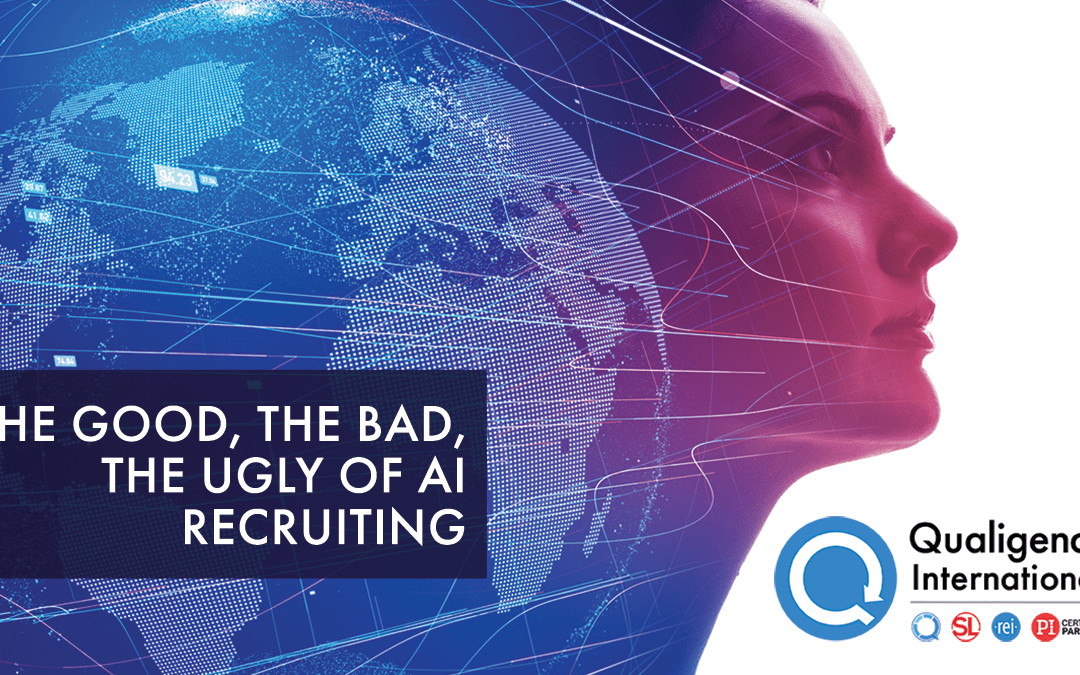It is Is AI recruiting good, bad, ugly, or somewhere in between?
Artificial intelligence is everywhere nowadays, from Alexa to credit card fraud detection and aircraft autopilot. Everyone is guessing how evolving AI technology will be used over the next few years, and recruiting professionals are no different.
On the one hand, you have recruiters who fear that AI is about to put them out of the job. On the other hand, you have talent acquisition leaders and recruiters who believe that AI is about to streamline the process and make their lives a lot easier.
No one can predict the future, but we can give you some clarity on what AI can currently do for recruiting. It would be nice if AI was a silver bullet that automated all our recruiting responsibilities, but that’s simply not the case. As it stands, AI in recruiting is a useful tool – no more, no less. While it offers recruiters a lot of value, it has its limits.
Let me explain a little further.
AI Web Scrapers
One of the most common AI tools in recruiting is AI-driven web scrapers. Essentially, these tools extract data from websites. Like traditional web scrapers, the result is structured data from countless web pages. The AI helps in that you don’t have to write the instructions for the web scraper or guide it for specific sites.
Unfortunately, web scrapers (AI or not) inevitably collect a lot of information that will be useless to the recruiting process. We all know that the details we find about candidates online are often outdated or just plain incorrect. People neglect to update their LinkedIn profiles and bio pages or embellish details to advance their career. AI web scrapers are still not capable of discerning fact from fiction or identifying whether the information is outdated.
It’s certainly a fast, easy way to obtain a lot of data. However, if you’re losing time calling wrong numbers or tracking down candidates with misleading information, it may be less valuable than it appears at first glance.
AI Candidate Outreach Bots
Another common application of AI in recruiting is leveraging bots for candidate outreach. Much like customer service chat bots, these AIs can handle simple requests and gather basic information on candidates. They allow companies to reach out to large amounts of candidates in a matter of minutes.
They are a poor replacement for genuine human conversation, though. Time and time again we have seen that recruiting qualified, in-demand talent requires personalized outreach and the establishment of genuine relationships with candidates. This is the polar opposite of what bots offer.
Bots may be effective for low-skilled or entry-level positions, where candidates are more readily available and actively seeking positions. When it comes to highly competitive labor markets like software development, bots are a non-starter. They may allow us to contact more candidates, but they offer a frustrating customer experience, are easy to ignore, and emphasize that the candidate isn’t worth our time of day.
If you care about the candidate experience or need to target competitive talent pools, approach AI recruitment bots with caution.
Advanced AI Recruitment Solutions
In the race to capitalize on new AI technologies, companies are using the technology for more than sourcing and engaging with candidates. In fact, some companies have started using AI solutions to review large numbers of resumes and identify quality talent. When companies are sifting through hundreds of candidates to interview, it’s easy to see the appeal here. However, there are complications with using AI to screen or short-list candidates.
One of the most-touted benefits of AI is that it will help eliminate bias in the hiring process. Unfortunately, this is a classic case of reality falling short of expectations. While AI certainly has the potential to help here, it has also made things worse in several cases.
For example, Amazon retired it’s AI recruiting tool once it realized that the tool negatively appraised resumes with any reference to “women” (as in “women’s chess club captain” or “Society of Women Engineers”).
Likewise, studies have found that the algorithm behind Google’s job ads for high paying positions disproportionately targets men, displaying the ads to more men than women.
In a nutshell, if Amazon (the world’s largest company by market value) can’t develop an effective AI recruiting tool, we’re doubtful that the technology will be readily accessible to average companies anytime soon. Furthermore, government agencies are closely watching these tools and labor law experts predict litigation is imminent. In our opinion, this particular application of AI in recruiting isn’t worth the risk of a lawsuit.
AI is Helpful, But it’s Not a Silver Bullet
AI undoubtedly holds value to the recruiting process. In the coming years, I anticipate that it will only become more useful to talent acquisition teams.
However, if I were to break out my crystal ball and make a prediction of my own, I would estimate that for the near future, AI will remain a recruiting tool – not an “easy” button that does our job for us.
We have found that when you combine AI with tried-and-tested techniques for sourcing and engaging candidates, we can produce more desirable outcomes. For example, Our in-house research team often finds data that cannot be found online or “scraped” by a bot. Next we combine AI data with our research and CONFIRM all information, leaving you only verified, same-day accurate recruitment data. This will eliminate the headaches of wrong numbers and outdated candidate bios. Likewise, our bot-free candidate outreach strategies achieve response rates of 80-90%…even with highly in-demand talent pools.
Humans still have AI beat in the recruiting sphere…it is our opinion that the HUMAN element in recruiting is much too important to leave to a machine…for the time being anyway.





